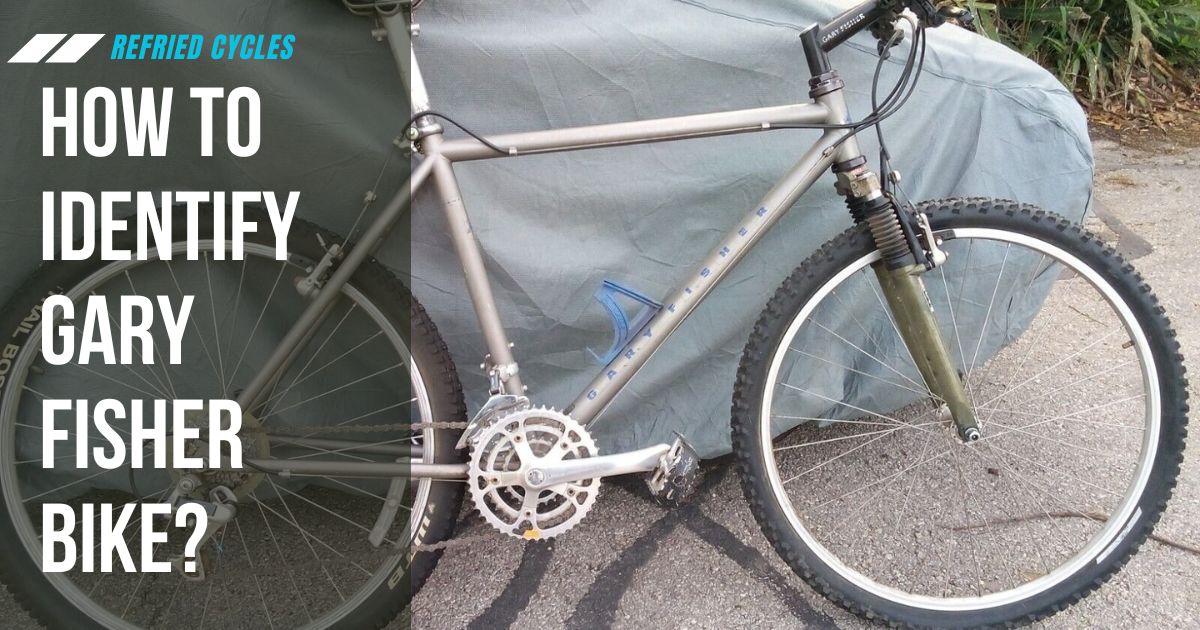In the realm of cycling, Gary Fisher stands as a revered name, synonymous with innovation and trailblazing designs that have shaped the landscape of mountain biking. From its humble beginnings in the early 1970s to its enduring legacy, Gary Fisher bikes have garnered a loyal following and a reputation for exceptional performance and durability.
However, discerning a genuine Gary Fisher bike from an imposter can be a challenge, especially for those unfamiliar with the brand’s distinct features and manufacturing history. This comprehensive guide will equip you with the knowledge and tools to accurately identify Gary Fisher bikes, making sure you can navigate the world of second-hand bikes with confidence when trying to identify a Gary Fisher bike.
Fear not, for this comprehensive guide will equip you with the knowledge and tools to accurately identify Gary Fisher bikes, making sure you can navigate the world of second-hand bikes with confidence when trying to identify a Gary Fisher bike. We’ll explore key areas and components to inspect such as frame markings, model paint colors, integrated parts groups, catalogue specs, and the all-important serial numbers that set a Gary Fisher apart. These traits enable seasoned cyclists and casual riders alike to recognize just what vintage or condition Gary Fisher model they encounter on the trails or online marketplaces. A visual language full of materials, craftsmanship, and pioneering two-wheeled ingenuity distinguish the Gary Fisher brand’s legacy. This definitive guide offers a roadmap to spotting their calling cards to identify Gary Fisher bikes spanning decades of manufacturing and innovation.
How To Identify a Gary Fisher Bike?
This guide will arm you with the knowledge to properly identify key features, components, and labels that set a Gary Fisher bike apart.
Get to Know Iconic Gary Fisher Models and Traits
Familiarize yourself with some of the most popular and rare Gary Fisher models manufactured over the past 40+ years:
- Hoo Koo E Koo (1995) – This special edition collector’s item Gary Fisher model blended vintage styling with modern components. It’s distinguished by blond-walled tires, skeletal frame graphics, and pricing ranging from $400 into the thousands.
- Paragon (1998) – The Paragon debuted 29-inch wheels for a smoother ride paired to a lightweight aluminum frame with Gary Fisher’s signature geometry. The blue, green and red colorways hearken back to late 1990s mountain bike aesthetic.
- Marlin (1995-2010) – Long-running budget model known for an aluminum/steel frame and entry-level component specs appealing to new riders. Multiple variants released over a 15-year span.
Inspect Frames and Components for Clues
Look for Gary Fisher logos adorning the bike tubing and components to confirm brand origin. Study groupset elements like cranks, shifters and derailleurs to identify component tier and approximate manufacturing date. Contrast paint colors, frame material (chromoly, aluminum, carbon fiber) and the presence of suspension forks against archived catalog data online to narrow down potential matches.
Decode the Serial Number
Locate the engraved serial number along the underside of the frame, often by the crank bottom bracket. Gary Fisher codes can pinpoint the exact year and specific model when referenced against online databases. Serial numbers generally follow this numbering format:
- First 2 Digits = Last two numbers of the bike’s model year
- Middle Digits = Specific model variant and size
- Final Digits = Individual frame number
Cross-reference any model names stamped directly on frames against annual catalogues and collector resources. Combining serialized clues with component analysis and color/logo confirmation compiles definitive proof for verification and appraisal purposes.
Inspect Frame Characteristics and Craftsmanship
Gary Fisher frames represent innovative geometries and expert welding that evolved over decades. Earlier “Stealth” models featured a seamless transition between the seat tube and top tube. Later “Fish” variants utilized a stepped junction design for improved standover clearance. Studying welds, tubing shapes, badge logos and suspension integration provides clues to manufacture date.
Component Groupsets Offer Period Signatures
Quality component sourcing from brands like Shimano, SRAM, and Fox has been a Gary Fisher hallmark. Compare groupset combinations against historical catalogues to ID model years. Look for XTR or XT drivetrains and brakesets on higher-end builds. Entry-level parts often included Altus, Acera or mid-grade Deore equipment. Suspension forks from RockShox, Manitou or Fox denote performance models.
Evaluate Paint and Finishing Touches
Vibrant paint from purple fade schemes to neon green with contrasting bright accents defined early Gary Fishers. Later Treks brought more refined finishes in gloss black, gunmetal greys and earth tones. Check paint condition for signs of restoration. Some models featured decorated head tubes, intricate frame graphics and custom tubing decals now synonymous with the brand.
Reference Year of Production Details
Check the underside of the bottom bracket shell for a stamped production date code or engraved serial number. The first two digits typically indicate the year of manufacture which can be cross-referenced with online databases listing specifications by year. This helps accurately identify component suites and paint choices against period-correct catalogue listings.
Consult Collective Wisdom Online
Online forums, enthusiast sites and blogs offer crowdsourced guidance from veteran collectors. The Gary Fisher Bike Directory provides searchable model databases with serial number lookups and spec sheets. Brand fan sites, forums and Facebook groups also help identify badge markings, paint codes and components with collective wisdom. Leverage these resources to aid and confirm your bicycle investigation.
FQA about Identify Gary Fisher Bike
What years were Gary Fisher bikes made?
Gary Fisher bikes were made from the early 1980s when he started the company, until Trek acquired Gary Fisher Bikes in 1993. Trek continued to produce Gary Fisher bikes under that brand name until around 2014-2015. So Gary Fisher bikes were made from the early 1980s through around 2015.
What are some notable Gary Fisher bike models?
Some popular Gary Fisher models over the years include:
Mount Tam – Fisher’s first mountain bike model from the early 1980s
Palisades Trail – One of the earliest production full-suspension bikes
Hoo Koo E Koo – Hardtail known for innovative frame design
Joshua – Popular hardtail model later produced by Trek
Sugar and Sugar Race – Race-inspired hardtails
Paragon – Full-suspension model also later produced by Trek
SuperCaliber – High-end cross country racing bike made by Trek
With a legacy spanning over four decades, identifying a Gary Fisher bike offers clues into an iconic brand that pioneered the modern mountain biking landscape. Seek out frame geometries paired with quality components that represent innovations still utilized today. Learn to decode serial numbers, paint codes, badges and catalogs that illuminate manufacturing origins. Hopefully this definitive guide to identify a Gary Fisher bike helps riders, collectors and enthusiasts preserve these pedal-powered pieces of history wherever encountered on the trails or online. Understanding how to identify a Gary Fisher bike enables a deeper reverence and appreciation for the two-wheeled ingenuity and lasting influence that Gary Fisher gifted to generations of adventure-seeking riders everywhere. For more information about bicycles visit Refried Cycles.









